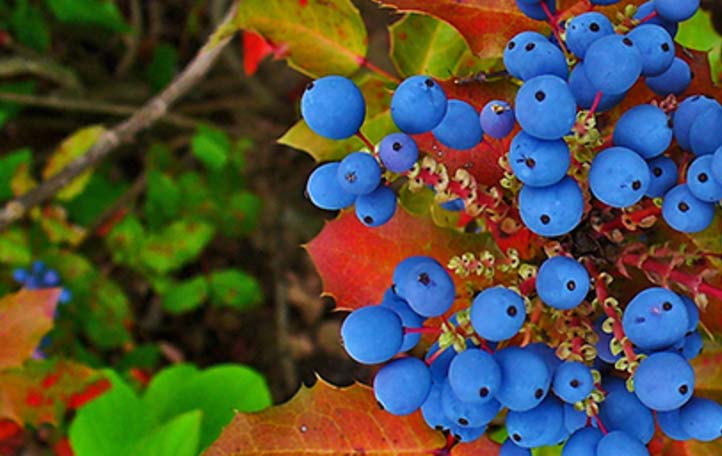When Seeds Hibernate: Breaking Dormancy
Image: Oregon grapes are a variety that requires cold stratification to germinate Most domesticated vegetables and grains sprout when and where they are planted. A requirement for going dormant (literally meaning "sleeping") has been bred out of them, because the gardener is going to take care of them, making sure they’re planted at the right time, and in the right conditions to sprout safely and thrive. However, perennials, berries, trees, and many herbs are closer to being wild, and still go into dormancy to help them survive. And just as perennial plants survive the winter by going dormant (literally meaning "sleeping"), some seeds need a winter nap, too. Seeds don't want to sprout on a warm day in December—they want to make sure winter is really over. So, each seed is programmed to need a specific period (up to 4 months, depending on the variety) in cold, wet, soil before they can sprout when the soil warms. If you plant seeds in the spring that need a period of winter dormancy, they may never sprout, or they may sprout after you have given up and sown another crop on top of them. To break their dormancy (wake them up), the gardener needs to create the conditions the seeds are waiting for. There are three tricks gardeners use to break dormancy and get seeds to sprout: Stratification, Scarification, and Soaking. Cold Stratification:
You need to give the seeds enough cold time to meet their chill requirement—a process called cold-conditioning or stratification. If you plant in pots in the fall and leave them outdoors, they will sprout when the weather warms. If you want to plant in summer, you can use the refrigerator to provide the cold. (Place the seeds in a bit of moist potting soil in a jar before refrigerating for as long as needed, then plant as normal at the end of the stratification period.) Each plant has a specific length of time that it needs for this cold, moist period—this prevents them from sprouting during unseasonable thaws. Chill requirements are usually given on the packet for each variety. So, for example, Rowan, or Mountain Ash, which naturally grows around the world in northern regions, needs 90 to 120 days of cold before sprouting. Red Root, from Mediterranean climates in the western US, needs only 30 to 90 days of cold. And Moringa, from the tropics, needs none. It doesn't even like to be stored in a refrigerator, because it needs warmth to stay alive. Warm stratification:
Scarification: Cold is not the only danger to young seedlings—in many places, water is the limiting factor. A plant that sprouts before there is a good supply of water is condemned to shrivel and die. So, plants from places with a pronounced dry season have very hard seed coats that prevent water from entering the seed and initiating germination. These seeds need to have their tough seed coat scratched so that water can enter before they can sprout. In nature, flash floods or raging rivers tumble the seeds along with rocks and sand, which scratch the coating and start germination. That way, a tiny bit of rain or dew won't fool the seed into sprouting before there is enough water for growth. Licorice and Astragalus are both riverbank- adapted herbs that need to be scarified. You can scarify seeds easily at home with a piece of fine sandpaper. Just cut the sandpaper in half, put a few seeds on the paper, and put the other half on top. Rub them lightly together 3 or 4 times. Then try soaking the seeds. If they swell up within a couple of hours, they are adequately scarified. If not, try again. If the seeds are cracked or broken, use less pressure or fewer scratches next time. Usually, one or two tries will find the happy medium. Soaking: The soaking removes the inhibitors that otherwise would dissolve very gradually in the moist soil. Be aware: most vegetable seeds do not have these germination- inhibiting chemicals and should not be soaked for long periods. (They will rot.) Peas, beans, and spinach can be soaked, but only long enough to soften the seed coat—usually 1 or 2 hours is plenty. Most other vegetable seeds need no soaking at all. ♥ top | Newsletter Home |Table of Contents| Archive
|



